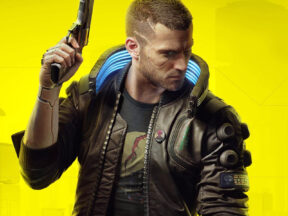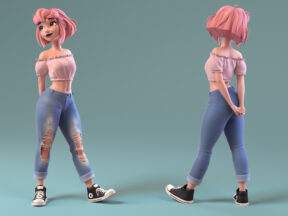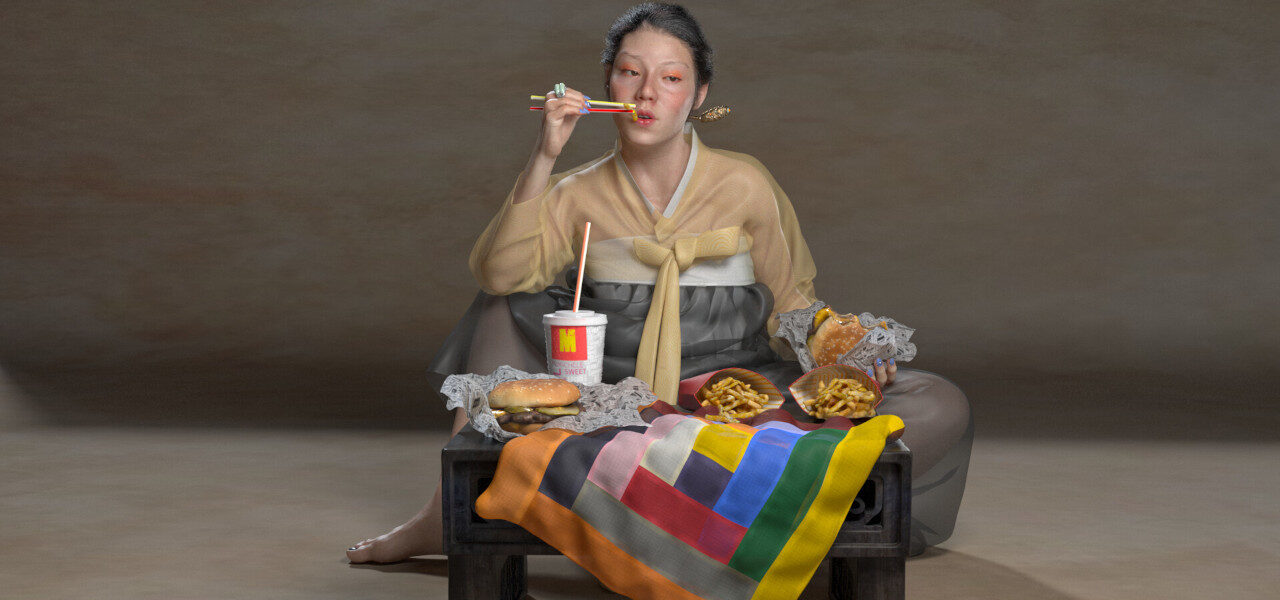
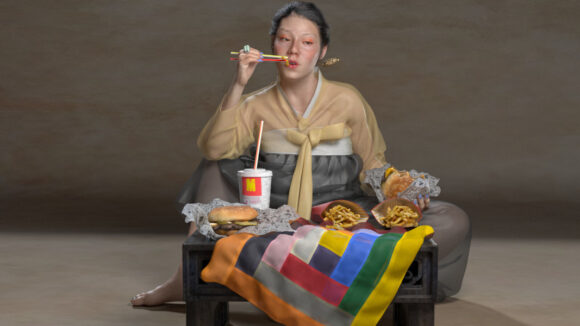
Storytelling Through Clothes: How Marvelous Designer 12 Is Used To Create Richer And More Complex Characters
Marvelous Designer is the go-to solution for many 3d fashion and character designers in the movie, tv, and games industries. Now, with the release of Marvelous Designer 12, the most realistic and traditionally-based cloth production software for 3d modeling is more versatile and user-friendly than ever.
Available for Windows and Mac, the updated software can be acquired with either a personal or an enterprise license, depending on studio size. For more information, head to Marvelous Designer’s website.
3d artist Michele Ahn, a texture artist at Tippett Studio, spoke with Cartoon Brew about using the software to tell stories with fabric and texture, and what small visual details can add to a narrative.
Cartoon Brew: Tell us a little bit about yourself as an artist as a 3d artist.
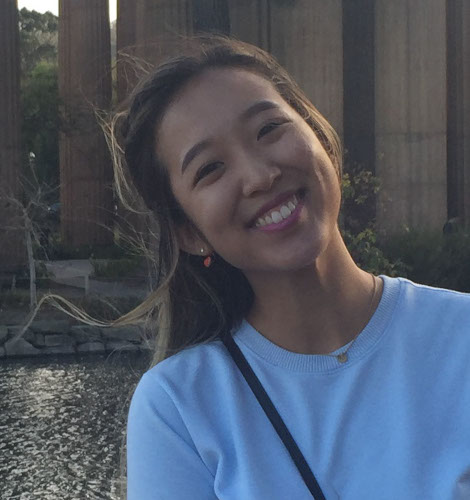
Michele Ahn: I’ve been working in the industry for about two or three years. I mainly work as a texture artist in Marvelous Designer.
What inspired you to become a 3d artist?
It was not a sweet and short journey. I started as a fashion major at Parsons, but I didn’t even last a year before realizing it was wrong for me. Not only was I not interested in that work, but I was also terrible at it. So I started thinking about what I wanted to do, and I always loved storytelling. That’s the most exciting part for me. So going into animation at the time would allow me to create a little world for myself without so many limitations.
Initially, I had a lot of friends in illustration, and they suggested I try that out. But I didn’t like the actual projects assigned to me. It felt like that wasn’t exactly what I wanted to do, while animation was somewhat similar but is very narrative-driven. It was more in line with the kind of art I wanted to create. That’s where the wheels were turning, where I didn’t feel limited as an illustrator. But I didn’t know about this 3d stuff, so I had to learn.
And it worked out. However, getting a gig right out of college took a lot of work. So I returned to school at Gnomon Academy, specializing as a modeling texturing major. They call them tracks. That’s how I refined my skills and got into the industry.
How does Marvelous Designer fit into your project pipeline?
Usually, I start with Marvelous Designer and do 85% to 90% of my work there. Then I bring it into Maya, where I have to transfer the high-definition model to the low res and create a clean UV topology. Then I move back over to ZBrush and add micro memory folds, all of that stuff. I try not to alter a lot of my Marvelous Designer stuff.
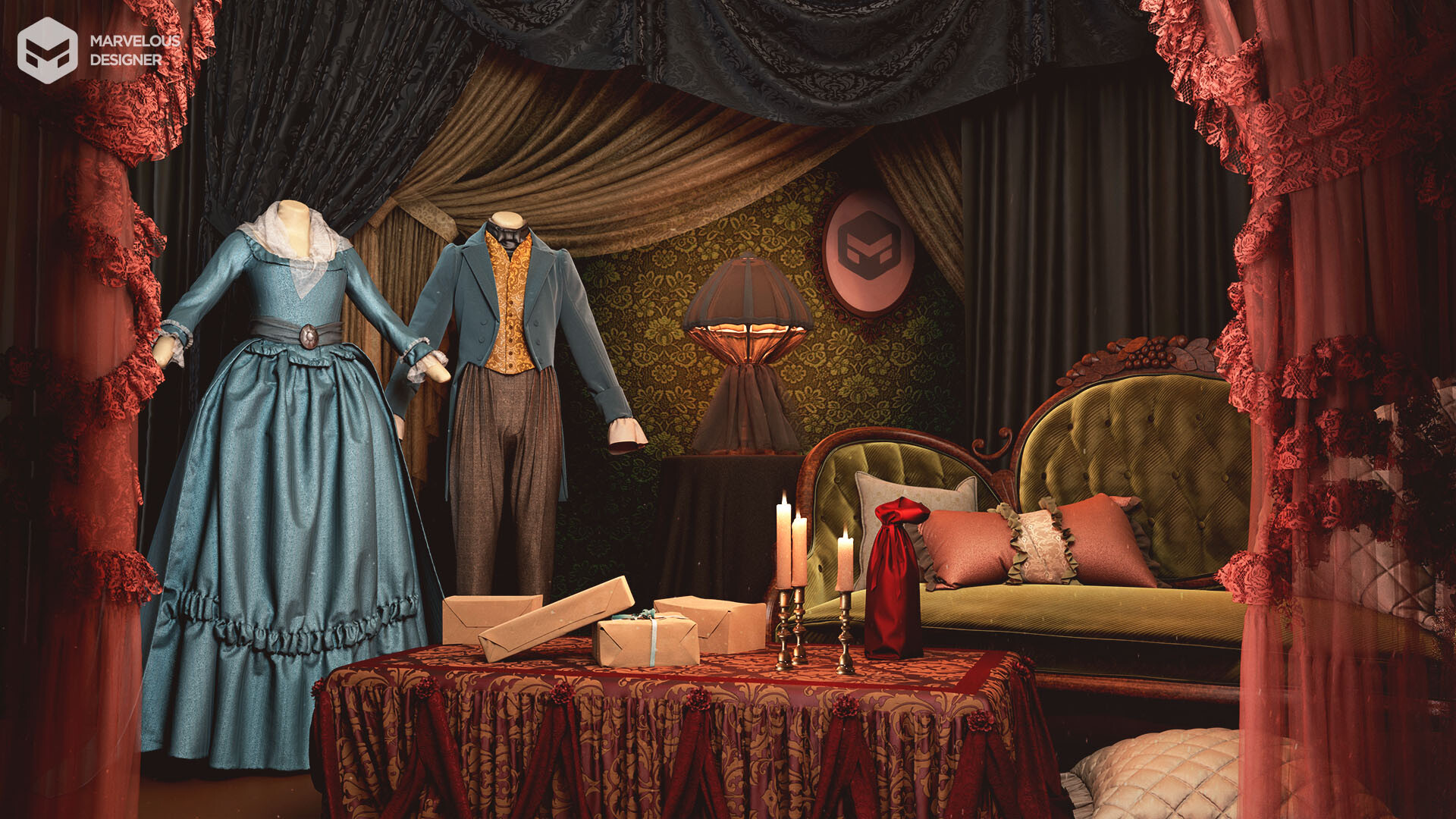
How does your storytelling ability come into play when working on garments in Marvelous Designer?
Clothing is an extension of who a person is. It’s inevitable; I know many people say you have to look from within, but with outward appearances you get an impression from the jump, especially with characters on screen. Whether on Netflix or Youtube, whatever you’re watching, the visuals are often all you have to judge something by. And so clothing is essential, and it’s just that first insight into who that person truly is.
I like when you see a character on-screen and immediately you know this is a bad guy. He’s always in black leather, and it’s only him; everyone else is in satin and stuff. And he’s a dark shadow in every scene. It’s clothing-driven storytelling which is always fun to watch.
What can a character’s clothing or appearance say about who they are and help you to tell a story?
There’s a lot of interaction that can happen without any words. Movies give an opportunity to communicate visually. A good example is the trope of the innocent good person who turns evil because of the things that happened in their life. Often you see that reflected in their wardrobe change and the subtleties of their hair being more evil or thorny looking, or when their color palette changes from pastels and warm tones to a darker, moodier color. It’s pretty powerful.
My characters, for the most part, wear clothes. So, it’s an excellent opportunity to showcase who they are in a still. Often, as a 3d artist, you don’t get to animate or see your piece in motion, especially as a character artist. You have to convey a lot in just a still. So, I take that opportunity to think of colors for that character and open up to who they might be and what type of person they are.
I do it a lot with fabrics. I’ve always been more focused on the kind of fabric that I use than color. I like that direction more because it’s more subtle but has a greater impact. We all know it’s like yellow friendly, blue calm; those are very obvious. But there are these mixed fabrics that you can put on a character and have them express a specific personality. For example, cotton and lace tend to be feminine while heavier velvets and leather are for colder characters.
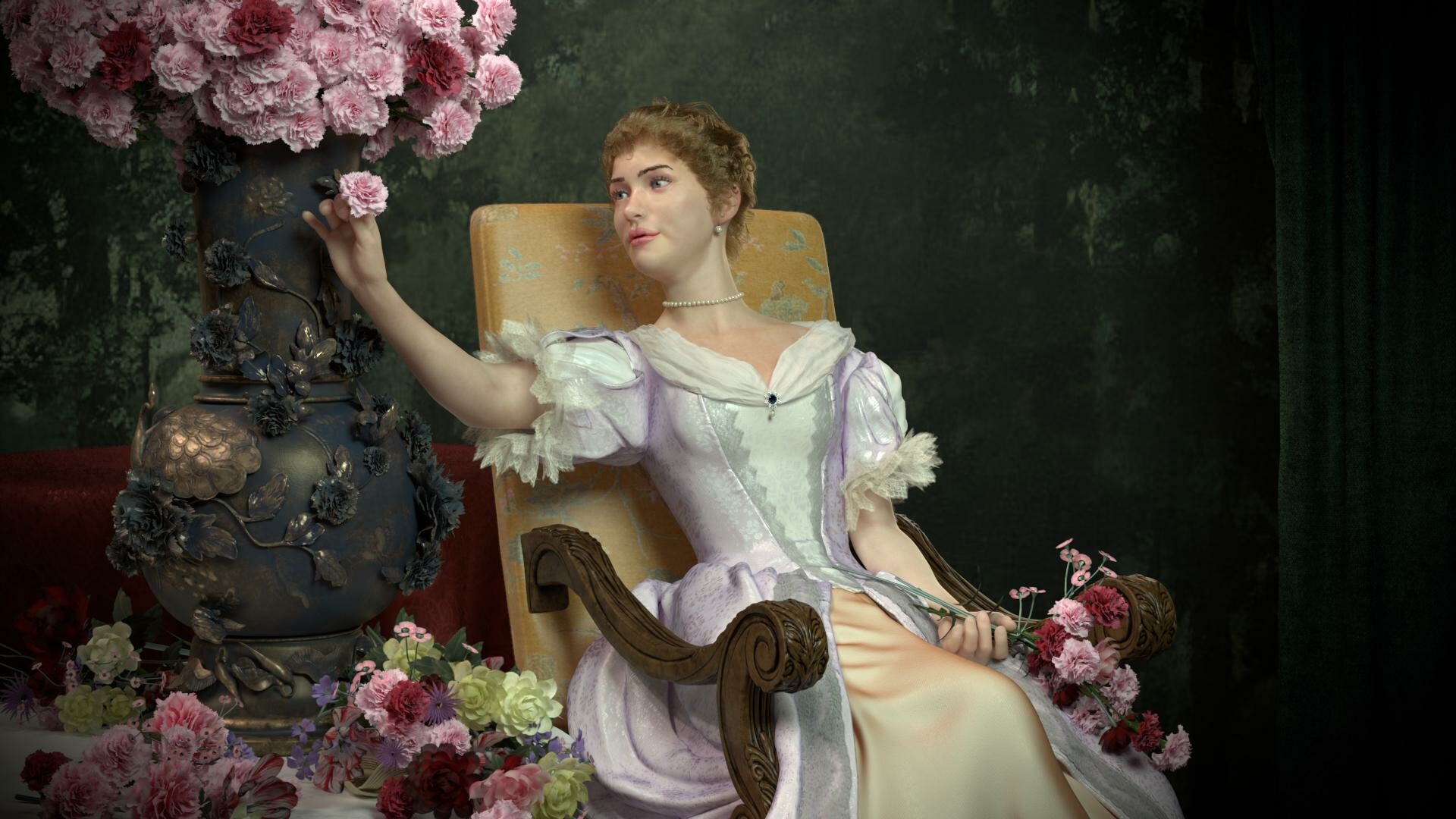
That’s interesting. I have never thought about using fabric to tell a story. Could you elaborate on that?
There’s so much diversity in textures, but when you see it on-screen you don’t necessarily appreciate every single fabric. You feel this mood that comes with the mix-matching of that fabric instead of just somebody wearing the same layered fabric on every single level of their attire. That’s when the wheels start to turn; you can place a lot more emphasis on something with fabric. Choices like that can inject this great depth into people’s characters.
As a 3d artist, you have to constantly think about the context of the character when working on an asset. Did they just come from battle, or are they about to go to war? Those are two very different looks. We start from there and consider whether they are a seasoned soldier or a novice who just got their uniform.
It adds to that character, and you don’t want a random vanilla dude walking around in the movie because he’s just a blank slate, and there’s nothing to grab onto. So as artists, we try to always think about how to have a little more fun with the character, maybe put a little nick on the ear or something to help him out.
Try Marvelous Designer today. Learn more here.
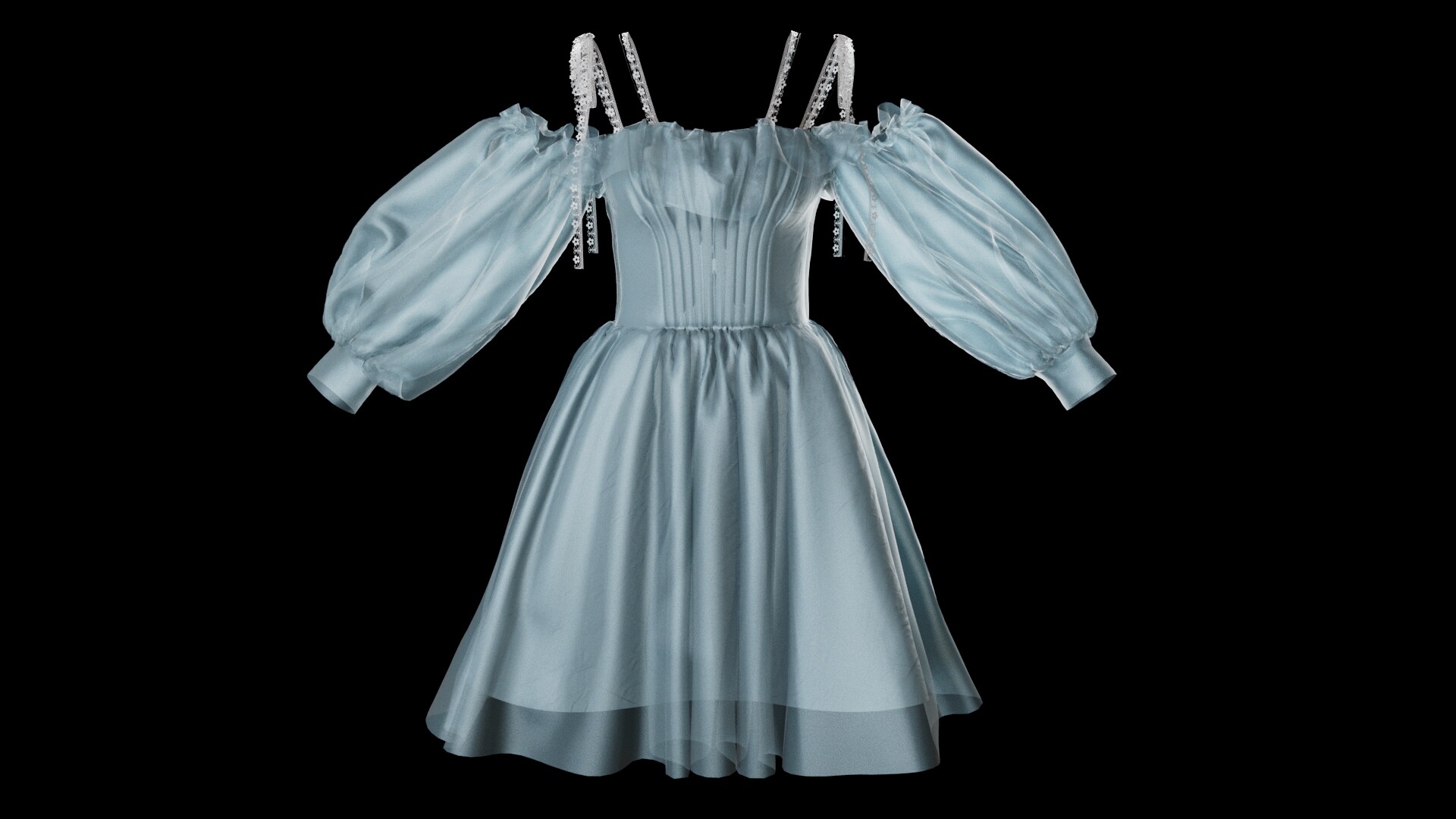
Pictured at top: “The Korean Girl,” Michele Ahn: “This was a piece done as a personal project. I wanted to practice the workflow of using a blendshape to animate a sim so that I can make my model sim clothing from A-pose to a sit down pose.”

